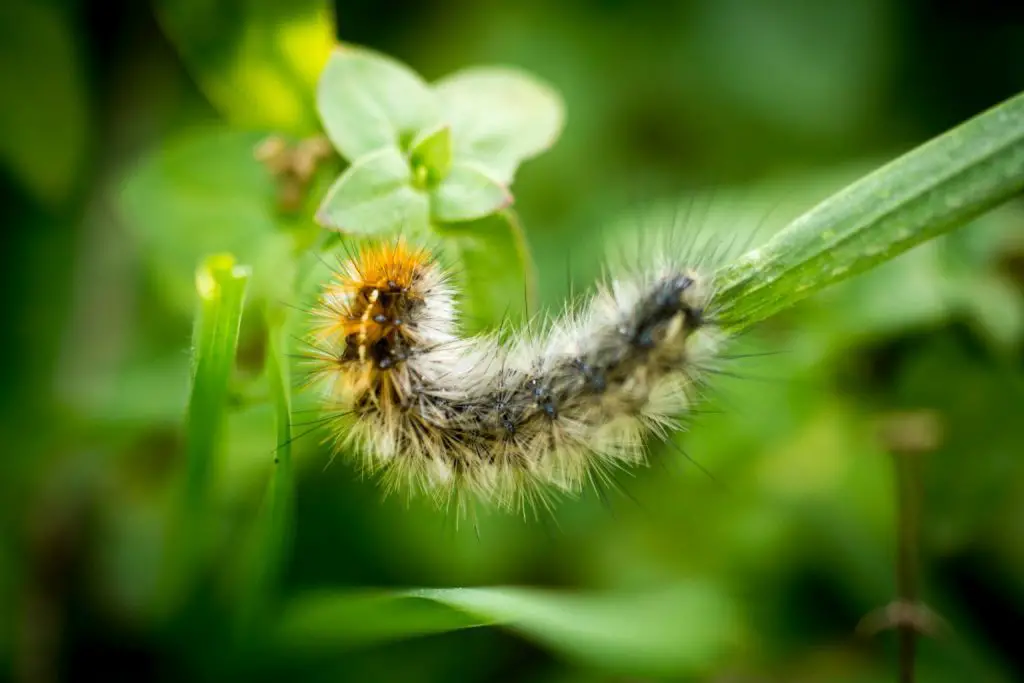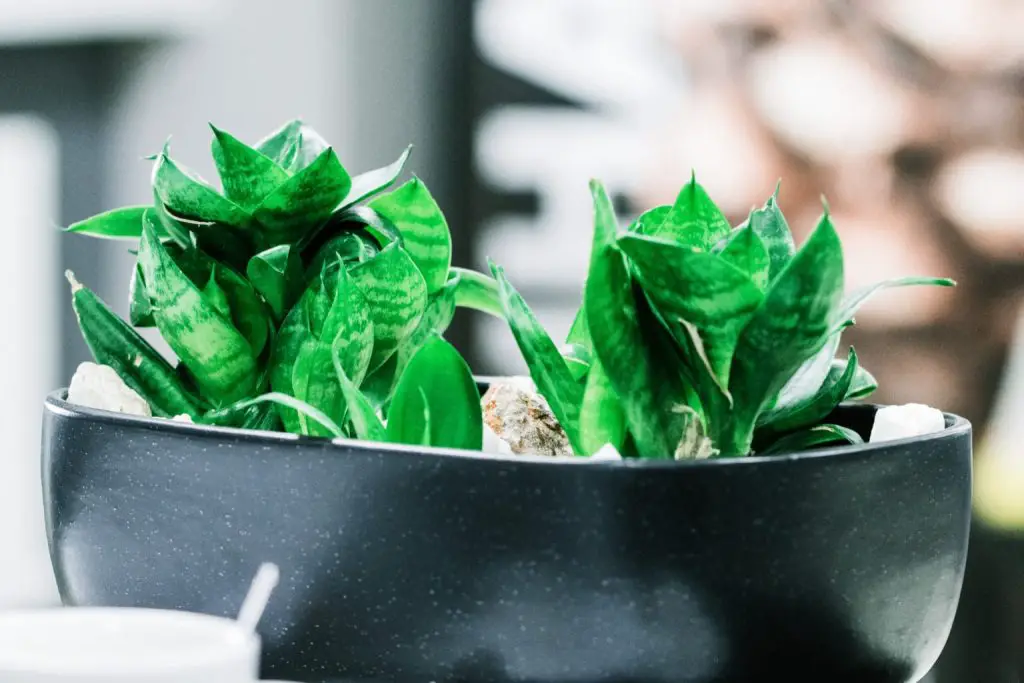The snake plant is one of the easiest and unique-looking houseplants to grow. This makes it very popular among experienced gardeners as well as beginners. Also known as a Viper’s bowstring hemp or Mother in law’s tongue, this hardy perennial succulent has a reputation for being nearly indestructible. However, like any other houseplant, it can get plagued by some problems. If your snake plant is showing some symptoms of illness and you are trying to figure out what’s wrong with it, read on to learn about some common problems and remedies to prevent your snake plant from dying.
Contents
How Do You Know If The Plant Is Dying?
So what makes a snake plant look like it’s dying? The most common reasons why a snake plant succumbs to ailments are root rot caused by waterlogged soil, pest infestations and exposure to extreme temperatures.
Overwatering is more fatal for snake plants because it affects the roots first. Overly wet conditions make the roots rot and become brown and mushy. As root rot progresses leaves turn yellow, droopy and then become mushy as well. Once the symptoms are visible in the leaves, it’s important to take immediate actions. Otherwise the problem may go past the point of rectifying.
Discoloration and deformation of leaves is a classic sign of illness. You may notice yellow, brown or slightly darkened leaves. There can be yellow patches, tiny red spots, brown tips or the whole leaf can change color. Curling leaves, stunted plant growth, presence of mold or sticky liquid on the leaves indicate pest infestation. Plants may also exhibit a fine, spider-like webbing between the leaves or near the soil. Dying plant tissues can make the leaves look mushy and wilted.
Remember that seeing these symptoms in your plant doesn’t mean it’s gonna die for sure. Identifying the symptoms early on and addressing the problem as soon as possible can ensure quick healing of your plant. Snake plants are quite tough and can recover rapidly. Once you start appropriate treatment, resolving the problem is fairly simple.
Common Snake Plant Problems
Now that you know which symptoms snake plants show when they get sick, let’s see some common underlying problems that can cause these troubles. Regardless of how adept you are at gardening, unfortunately the following can still affect your plants.
In this post I explain 4 of the most common problems that can kill a snake plant. If you didn’t find your answer here, check my other posts that cover more symptoms and solutions.
Rotting Roots
One of the most common problems that snake plants face is root rot due to overwatering. This is more prone to happen in the winter months. Overwatering doesn’t always have to do with pouring too much water. It means that the soil remains wet for way too long or the plant is receiving water more often that it should. Soaking wet soil can suffocate the plant roots and hinder the oxygen intake. The roots cannot take in the nutrients needed for the plant growth. This ultimately results in overgrowth of soil fungus, rotting roots and the decline of the plant.
Symptoms
The challenge with root rot is that it often goes unnoticed because the first signs occur beneath the soil surface and out of sight. Healthy roots start getting darker in color until they turn dark brown. This can start with some parts of the roots and expands further to the whole root system. At the same time, the root texture changes from firm to soft and mushy. As the rot advances, leaves start turning yellow, mushy and droopy. Stinky roots and bad smelling leaves are certain indicators of a root rot. In extreme cases, root rot can kill the whole plant within a week.
Treatment
If you caught any of the symptoms soon enough, follow these steps to save your snake plant.
- Remove the plant from its pot and gently clean off as much of the infected soil as possible.
- Observe the roots to see how much damage has done. If most of the roots have already turned into a brown mush, it’s impossible to save the plant. Discard it safely away from your other healthy plants. Or you can propagate it by taking cuttings from the healthy leaves.
- If the rot is not severe, the plant will need a repotting. Using sterilized pruning shears, cut off the dark, mushy parts of root, keeping only the healthy portions. Cut away damaged yellow leaves, if any.
- Now dip the remaining roots in diluted hydrogen peroxide (1 teaspoon in 1 litre of water). Or sprinkle some cinnamon on them.
- Repot the plant in a new pot (with drainage holes) using a clean, dry and well-draining potting mix.
- Let the plant sit in the dry soil for a couple of days. Then gradually start the watering.
Cold Damage
Native to tropical Africa, snake plants grow better in warmer temperatures. Although they can tolerate low temperatures up to 50-55° F (10-12°C), mother in law’s tongue are not cold hardy plants. Leaving the snake plants outdoors or in a balcony during winter season highly increases the chances of cold damage.
Snake plants are succulents that store water in the leaves. And frosting can freeze the water in the plant cells. When exposed to freezing cold temperatures, the cell walls within leaves get damaged. The injury interrupts the water and nutrient flow through the leaf, causing the leaves to perish from dehydration. The roots can remain safe if the soil is dry. But when the plant freezes while its soil is still wet, it can die in a few days.
Symptoms
Cold damage can result in scarring of the leaves of snake plants. If the plant experiences frosting, leaves can become soft, limp and mushy. They might develop light brown marks or bruises and start drooping. Affected roots also become mushy and slowly rot away.
Treatment
Injury caused by low temperature is permanent and nothing can revive the leaves back to normal. The only way is to cut away affected leaves if they make the plant look unappealing. Prune heavily damaged leaves from the plant with sterilized and sharp tools. Make sure to keep healthy foliage intact as over-pruning further stresses the plant. Discard the plant if there are no healthy roots.
Fungal Problems
Wet soil/leaves cause fungal problems, such as southern blight and red leaf spot. You can recognize them by the plant’s appearance, especially the leaves. Southern blight is caused by a widespread parasitic fungus that affects over 500 plant species including many houseplants. Warm, moist conditions seem to promote the disease growth. Southern blight penetrates the host plant and infects it quickly. Within 7-10 days, external symptoms appear signifying infection.
Another common fungal disease that can attack snake plants is red leaf spot. It is also commonly seen in spring and summer months when temperatures are warmer, but can infect houseplants year-round. Red leaf spot mostly affects the young leaves that grow in the center of the rosette.
Symptoms
Southern blight shows in the form of water-soaked lesions on leaves. In later stages, white cottony web like growth develops near the soil line. It eventually turns hard and dark brown colored. The affected plant can also exhibit wilting of the leaves with wet, softened areas of dying plant tissue. Red leaf spot is recognized by small red or reddish-brown spots on the leaves with a tan center. Over time the spots expand and coalesce to form large, sunken lesions.
Treatment
Infestations in the initial stages can be treated with a sulfur spray or fungicide. Chemical treatments do not eradicate the current infection but controls the spread by preventing spores from germinating. It is important to keep the plant dry to eliminate the foliar phase of fungus. Remove the affected parts entirely to help prevent the spread.
Pest Infestation
Although snake plants are generally not prone to pest infestation, they might succumb to some common pest wreaking havoc on indoor houseplants. Snake plants can get attacked by insects like mealybugs, thrips and spider mites. It can be a bit difficult to spot them early as some of them are very tiny, almost not visible to the naked eye. All of these pests suck sap from the plant, cause small wounds and make the plant weaker.
Mealybugs are soft-bodied, oval-shaped, white insects that are covered in a waxy, cotton-like material. They are usually found in colonies and lay up to 50-100 microscopic eggs at a time. The citrus mealybug is the most common species found on succulent plants like the snake plant.
Spider mites are tiny (around 1mm in size) sap-sucking pests that are found on the undersides of leaves. They pierce the waxy coating of leaves to feed on the internal fluids. One of the biggest challenges with spider mites is their prolific nature. A heavy infestation can occur before any visible symptoms.
Like spider mites, thrips are small, thin insects attacking all parts of the plant. They can also transfer viral infections such as tomato spotted wilt virus. Check this post for information on more pests that affect snake plants.
Symptoms
All these insects make small, visible wounds on the snake plant leaves. Mealybugs also excrete a sticky liquid encouraging the growth of sooty mold. Thrips may cause silver-grey scars, rough patches or callused areas on leaves. Stunted leaf growth, yellowing or curling of leaves happens as the disease progresses. At advanced stages leaves can wilt and fall off. Plants may also exhibit fine, spider-like webs between the leaves or at the base of the plant.
Treatment
- If you identify mealybugs on a small localized scale, the most effective way to treat is to manually pick the adults and egg masses off by hand. You can also wipe them with a cloth or cotton swab dipped in rubbing alcohol. Another way is to force them away with a water spray.
- Spider mites are best eliminated by washing them off the plant with water and increasing the humidity around the plant.
- Thrips cause yellowing and curling of leaves, so the first step is to remove the infected leaves. Then wipe off all the healthy leaves with alcohol, ensuring to clean both sides and crevices on each leaf.
- Using insecticidal soaps and biological control is another possibility to control the infestation.
- Heavily infested plants are better off discarded because pest control would be lengthy and you risk infection to nearby plants.
How To Prevent Your Snake Plant From Dying?
It’s always better to avoid the diseases than treating them after the plant has already suffered. Here are some easy tips to make sure that your snake plant remains healthy and strong to prevent any infections and sickness.
Follow A Good Watering Schedule
Water the plant regularly during the growing season. The best way to check if your plant needs water is to test the soil moisture. When the top 1.5-2 inches of soil has dried out completely, water the snake plant thoroughly until it drips from the drainage holes. Discard the drained water so that the plant doesn’t stand in water. From fall to late winter when temperature drops, water just occasionally, keeping the soil on the drier side. When the leaves are bright and green, you’re doing a good job.
Use A Well Draining Potting Medium
Potting your snake plant in a well-draining soil is essential. Also make sure that your pot has drainage holes. Use a gritty potting mix made for cacti and succulents. Or add some additives in your regular soil to make it more loose and breathable. Read this post for some DIY soil mix recipes.
Keep Your Plant At Room Temperature
Move your snake plants indoors if the temperature is supposed to drop below 55°F. Keep watering to minimum during the winter time and never water the plants at night. Avoid the combination of wet soil and frost at any cost.
Look Out For Early Signs Of Pest Infestation
Avoid standing water on the plant leaves and near the roots. Inspect all new plants for infection when bringing them home. Avoid reusing old potting soil from previously infected containers. Don’t forget to isolate the infected plants to prevent the spread of any infectious disease.


